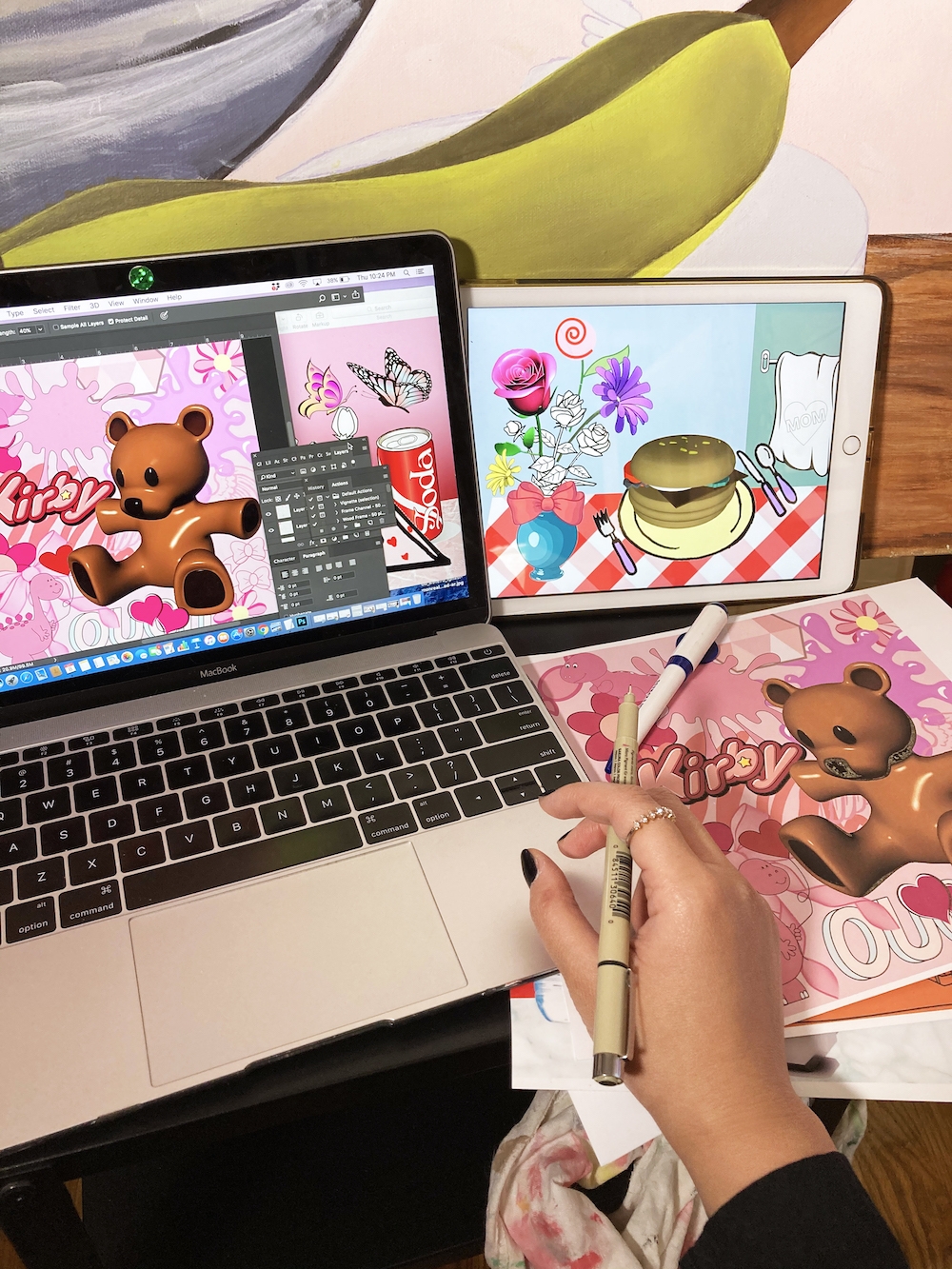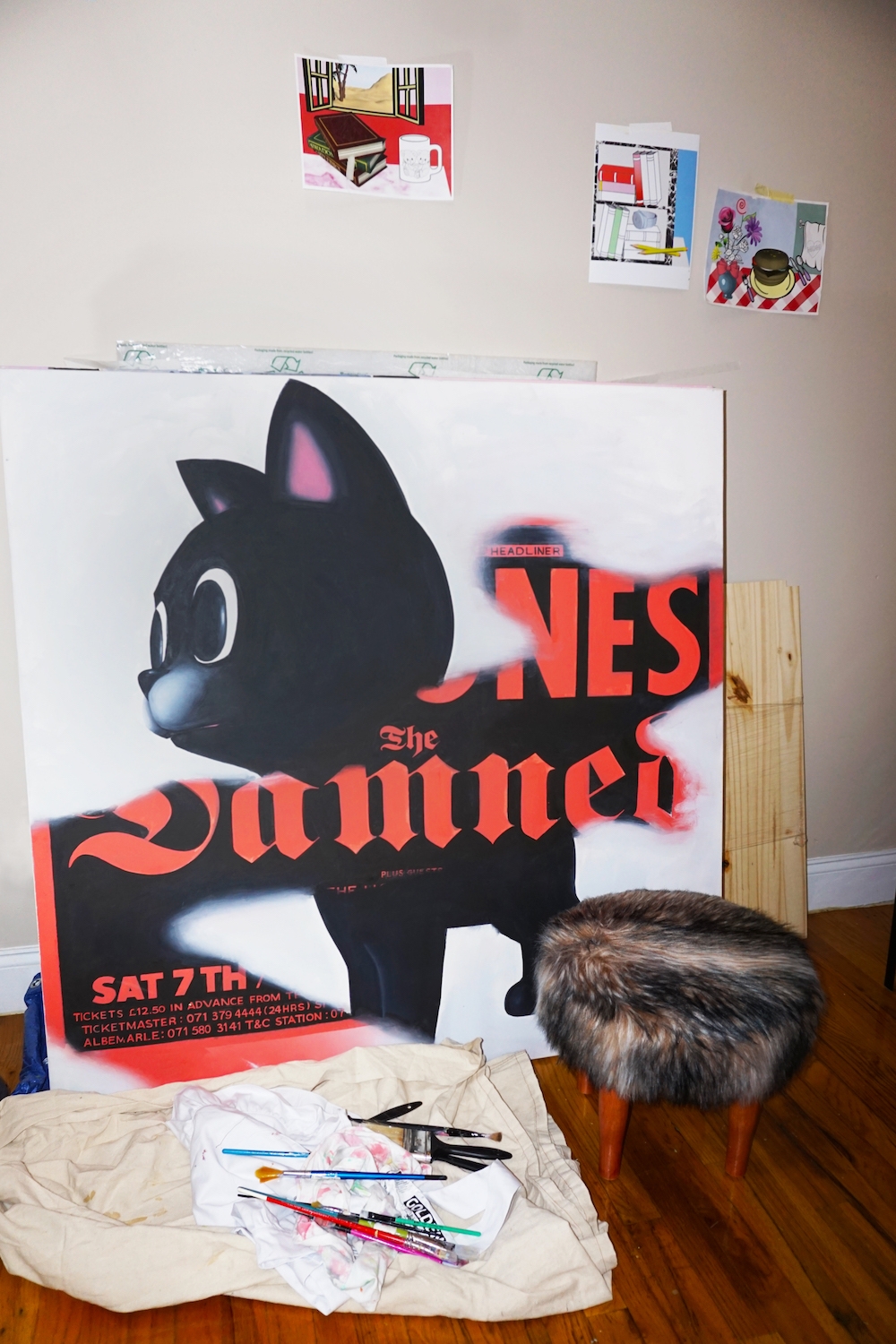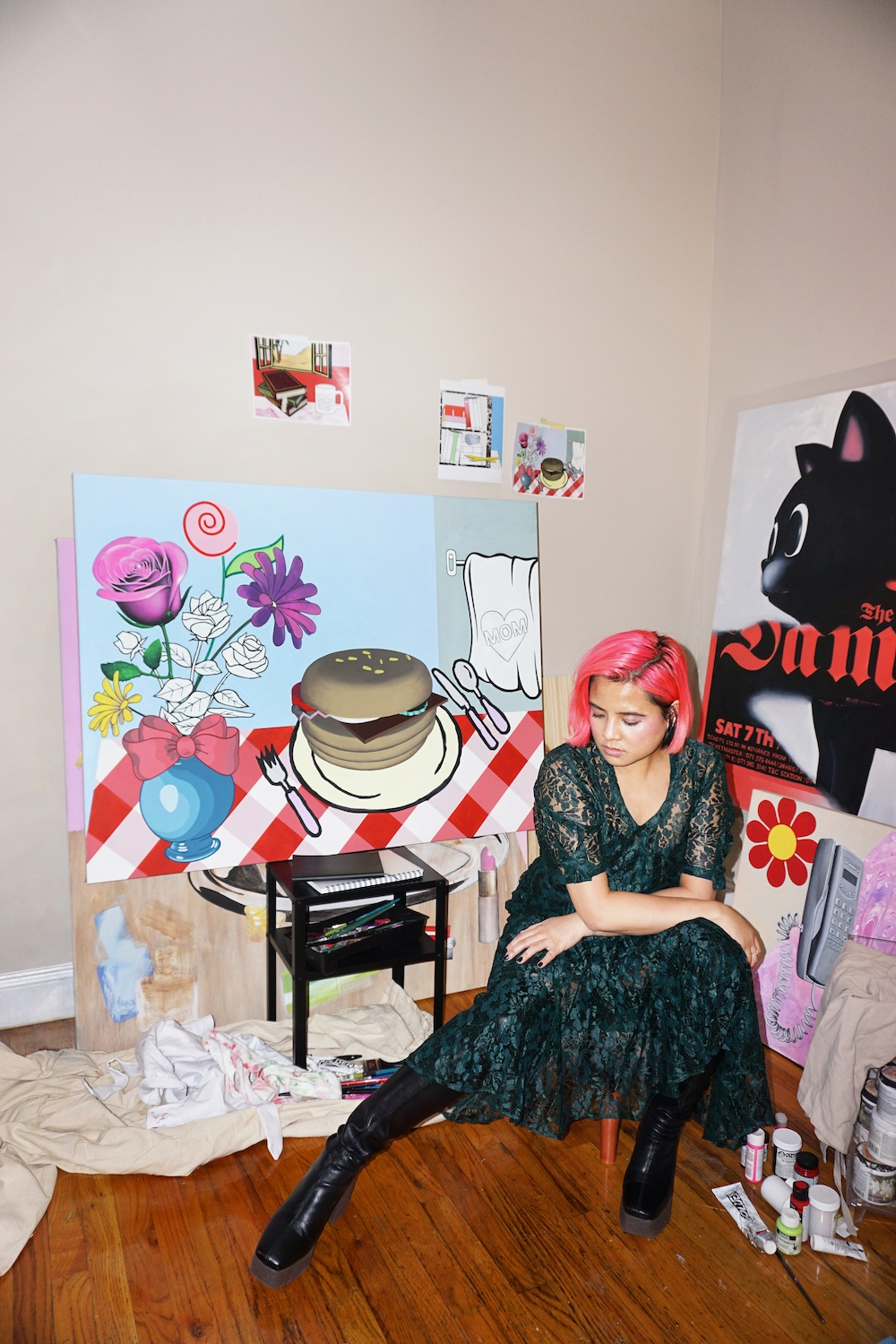We’ll be hearing for years and maybe decades about how the pandemic affected the lives of all the artists we’re used to hearing about but the crisis is going to have far deeper and more far-ranging effects on the art world than what we’ll be able to read on the scrubbed surfaces of monographs and profiles. To help with the effort to take stock of the wider picture, I talked to an emerging artist, Joanna Beray Ingco, about how things have been going with her:
ZAK: So… let’s start with the worst of it. For you.
JOANNA: At this point it seems as each day passes, more people are over it and are growing pretty lax in interacting with others or precautionary measures, but I personally can’t forget how tough and traumatic those first few months were for me—not just as an artist, but as a single woman living alone and a new transplant: About 10 days into the lockdown, fixated on the news with dread and doom, I came down with a mild fever, all the symptoms of coronavirus, and being in bed sick with all the familiarities of the flu but also something I’ve never felt in my life. There was a deep immediacy and hold on my body and mind, it’s very strange to describe but I felt like something was very wrong. I had chills, a fever, very weak, seeing things—basically hallucinating, a deep rattling in my lungs, often gasping to breathe. I would get better and then get five times worse, in intervals, for months. In those early moments, when top medical experts were trying to pinpoint true identifiers of coronavirus, I was living this pure nightmare. The news would then confirm things I had endured with a two-week lag. And in all this, at the very worst, with 800 dying in the city each day, we’ve found ourselves in what was an indefinite, never-ending, self-quarantine… detached… all the time in the world—all the time, that honestly, most creatives thirst for, but not at this cost. Not this way.

Digital drafts composed in late March 2020.
Are you or anyone doing anything special to keep productive or show things during the emergency or are you just waiting it out?
In survival mode, when I was most sick, I’ve magically been able to make some of the most personally exciting and forward work. I felt compelled to still feel and make. I was able to be productive from bed, on my laptop, and keep my ideas going, even if physically I was less capable. I mainly did digital blueprints for new work, new paintings—pre-production.
Do you think the work was directly affected by what you were thinking?
The work was directly affected by how I felt. Lost. And reaching. And physically weak. Trapped in my body but overactive mentally. And overflowing with ideas.
I think the viewer won’t see loss at all, more like visual abundance. It is really happy-looking work—more than usual even, probably because I naturally was drawn to images that were cute and cheerful in reaction to all the loss, to escape the pain and suffering my body was feeling. And the crying.

Beray Ingco’s New York studio, Oct. 2020, photos by SiiGiil, courtesy of the artist.
I think we’ve all had a lot of time to read and watch movies and stuff, what was the most intense or exciting or interesting experience you’ve had looking at art during the pandemic?
Early on, I was immediately into watching Contagion, Outbreak, World War Z, Train to Busan, 28 Days Later, I Am Legend and then just overt scary films like The Shining, all the Hostel series, Cabin In The Woods. I think I had to work through understanding all the new despair. Then, it made me feel better watching worlds that were worse than ours, but that says a lot that they had to be true horror to feel worse.
I feel like sometimes horror movies feel like swimming—like you’re allowed to sort of move around in the fear, go deep, go shallow, splash around? Get used to it?
I fell deep in it—to the point of being desensitized—one movie after another, just swallowed up and surrounded. It’s not like we all had lunch to get to or anything. In this weird time I’ve bounced from “nothing matters” to “everything matters,” back and forth. And in extremes. Of all feelings. You get used to the feeling of uncertainty, or accepting that a base level of great uncertainty is commonplace now.


